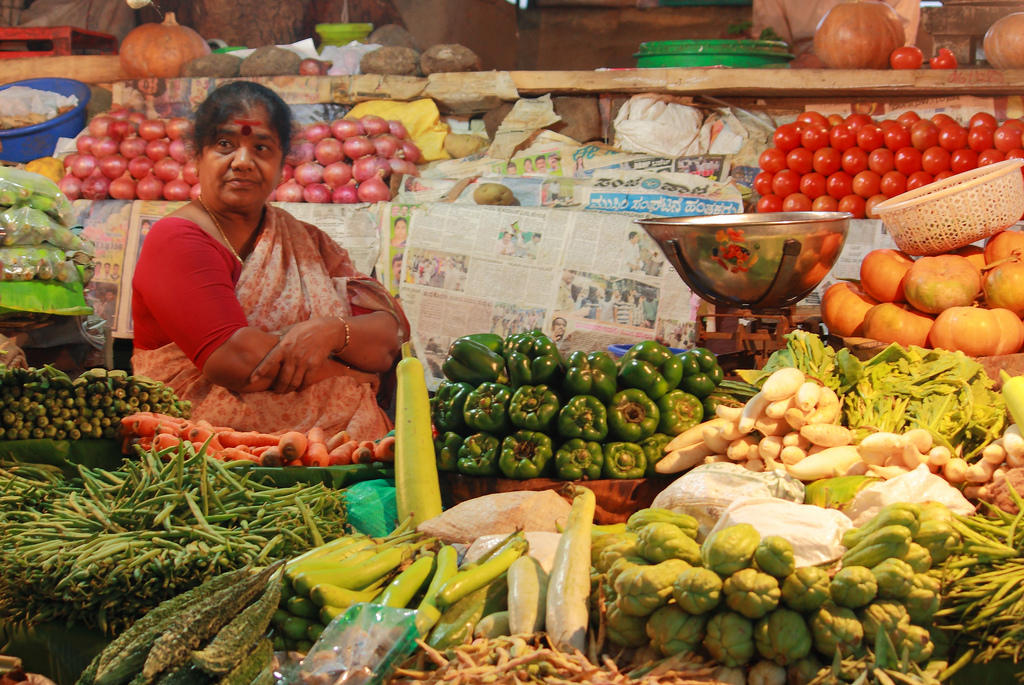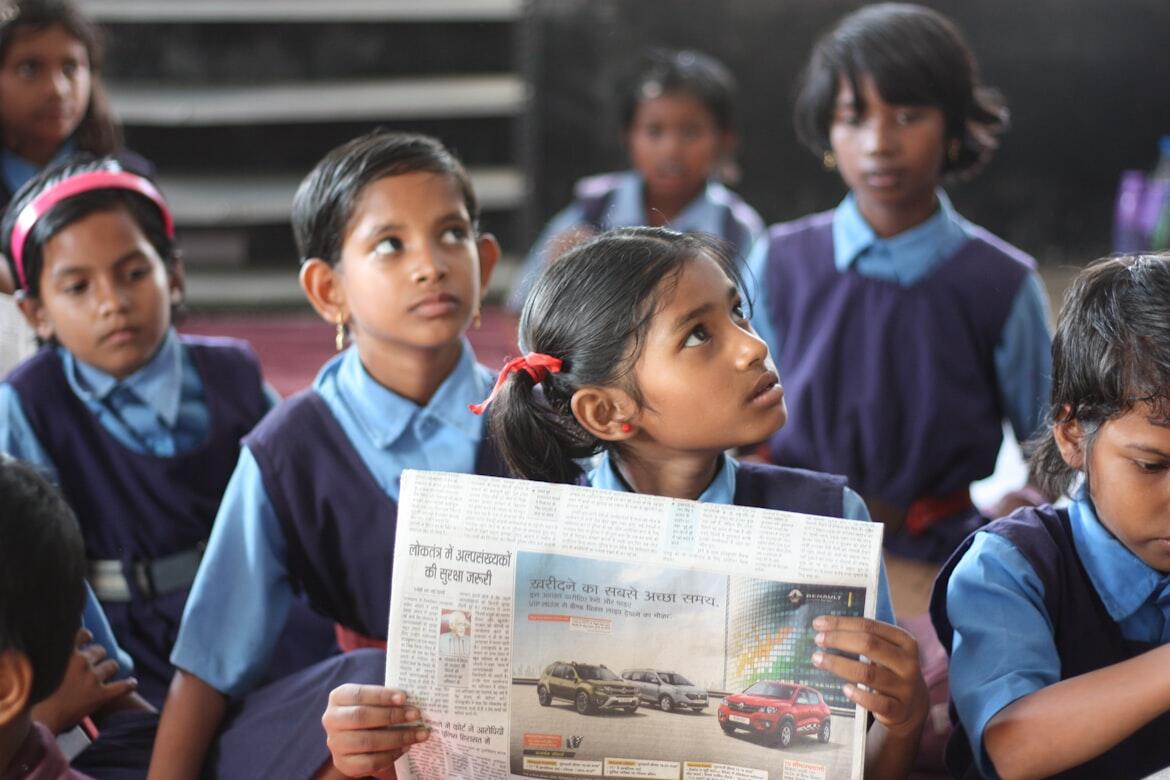If you started to learn Hindi recently, some of the most useful words you want to add to your vocabulary will be verbs. Verbs are often formed with a noun so learning a verb is a one-stone-two-birds situation.
The Hindi language and grammar is incredibly rich and through the years, the language borrowed words not only from Sanskrit, the most ancient Indian language, but from Persian, Arabic and English as well. However, there is no accurate or official estimation of how many words the Hindi language contains, even though the Collins Hindi-English dictionary boasts more than 250,000-word translations.
Hindi is not the only language of the Union of India; besides 22 other languages are also commonly spoken. Urdu and Hindi are mutually intelligible, meaning that if you speak Hindi you will be able to understand Urdu. The main difference between the two languages is the script system they use. Hindi words are written in the Devanagari script, while Urdu uses the Persian alphabet.

Hindi verbs have a rich linguistic history rooted in Sanskrit, evolving to form the foundation of modern Hindi grammar. At the core of Hindi sentences, verbs express actions or states and change according to tense, mood, and aspect. While this guide focuses on simple verbs in Hindi, it’s important to understand how they connect with more advanced forms like continuous and perfect tenses. Simple verbs serve as the base, which later combine with auxiliaries to create these complex aspects. Additionally, verb endings often change through the addition of a suffix to indicate gender, number, and person, making them highly dynamic. By mastering simple verbs first, learners can confidently move toward constructing sentences in various tenses and aspects.
In Hindi, simple verbs form the foundation of all actions, and they evolve based on tense, gender, and number, much like how English changes “eat” to “ate” and “eaten.” For instance, the verb “खाना (khaana)” means “to eat,” but when used in a sentence, it transforms according to who is acting and when. In the present continuous tense, you’ll often see forms like रहा (raha) for masculine singular, रही (rahi) for feminine singular, and रहे (rahe) for plural or formal subjects. So, “I am eating” becomes मैं खा रहा हूँ (main kha raha hoon) if the speaker is male, and मैं खा रही हूँ (main kha rahi hoon) if the speaker is female. These changes, combined with suffixes, allow Hindi verbs to express detailed information about the action. To make this clearer for learners in Singapore, here is a comparative table showing common simple verbs in Hindi with their English meanings, Hindi forms with pronunciation, and their equivalents in Mandarin and Malay.
| English Verb | Hindi (Word + Pronunciation) | Mandarin (Word + Pinyin) | Malay (Word + Pronunciation) |
|---|---|---|---|
| To eat | खाना (khaana) | 吃 (chī) | makan |
| To drink | पीना (peena) | 喝 (hē) | minum |
| To walk | चलना (chalna) | 走 (zǒu) | berjalan |
| To go | जाना (jaana) | 去 (qù) | pergi |
| To come | आना (aana) | 来 (lái) | datang |
| To sleep | सोना (sona) | 睡觉 (shuìjiào) | tidur |
The Auxiliary "To Be" - Honaa
This verb is just as important in Hindi as it is in English. If you don't know how to conjugate this irregular verb you will not be able to conjugate any of the Hindi regular verbs.
You mainly need to know the simple forms of the present, past and future tenses of this verb to decline all the regular verbs. This is the only verb we will give a full conjugation as it is most likely the most important verb you should learn.
- Present Tense -
I am = Main hoon
You (intimate) are = Too hai
You (familiar) are = Tum ho
You (formal) are = Aap hain
He / She / This is = Voh / Yeh hai
We are = Ham hain
They / That are = Ve / Ye hain
The present form of Hona does not inflect depending on the gender of the subject, however, the past and future tense do and the feminine form is written in parenthesis.
- Past Tense -
I was = Main tha (thi)
You (intimate) were= Too tha (thi)
You (familiar) were= Tum the (thin)
You (formal) were= Aap the (thin)
He / She / This was = Voh / Yeh tha (thi)
We were = Ham the (thin)
They / That were = Ve / Ye the (thin)
- Future Tense -
I will be = Main hunga (hungi)
You (intimate) will be = Too hoga (hungi)
You (familiar) will be= Tum hoge (hungi)
You (formal) will be= Aap honge (hungi)
He / She / This will be= Voh / Yeh hoga (hungi)
We will be = Ham honge (hungi)
They / That will be= Ve / Ye honge (hungi)
You will also have noticed the different grammatical pronouns that are used

"To Eat (Khaanaa)"
As we mentioned before, verbs often share the same root and may even be the exact same as their noun equivalent. For instance, the noun "food" is exactly the same as the verb "to eat". "I eat food" will read "Main (I) khaana (food) khaata (eat) hoon (am).
"To Do (Karnaa)"
Verbs that require Karnaa include "to love" ,"to clean", "to feel" or "to work", so if you want to say:
- "I love you = Main (I) tumase (you) pyaar (love) karata (do) hoon (am)
Be aware when saying that in India though. Traditions and customs are still very important in the country. Even though romantic love is one of the favourite subjects of the Indian film industry or Bollywood, it is still the norm for marriages to be arranged. When a couple meets on their own, without the involvement of a matchmaker, it is very common that they still go through the intricacies of an arranged wedding.
"To Give (Denaa)"
This is another one of the Hindi auxiliary verbs that are often used to conjugate in Hindi. When negotiating, you will need to use this word to bargain for the best deal possible. And be careful, Indians are famously known to be ruthless bargainers.
"One hundred rupees, that's my final offer = 100 rupees Dena hai toh deh?"
This is one of the Indian expressions that can not be translated literally in English, but it will mean that if the shopkeeper or tuk-tuk driver you are negotiating with does not take your offer, you will walk away (and if you do walk away they will usually agree, given that your offer was not insanely low).

"To Go (Jaana)"
Saying that India is a big country is an understatement. It is gigantic. Ranking as the 7th biggest country in the world, India is almost as big as continental Europe.
Cities in India can feel somewhat chaotic and completely unorganised. As a fresh-off-the-plane newcomer, the streets of Bombay or Delhi will look like a giant maze. Knowing how to ask for directions in Hindi might get you out of a few sweaty and anxious situations.
If you are talking to a tuk-tuk driver here are a few sentences that will come in useful:
" I want to go to ... = Mujhe (Location) jaana hai"
or "I want to go to the train station = Main tren steshan jaana chaahata hoon"
"How much to go to...?(...) = Jaane ka kitana lagega?"
If you are taking a taxi in India, make sure to ask the driver to put the meter on unless you agreed on a flat rate for the fare. Once again, if the driver refuses, just walk away.
"To want (Chaahnaa)"
This verb will come in very handy when you want to order something in bars and restaurant or even at the street food stall around the corner.
One of the most common ways to start the day for Indian workers is to visit their favourite chai-walla (or tea seller). Chai simply means "tea" but pretty much anywhere in India, it refers to the delicious spiced milk tea that Indians make to perfection and drink by the pint.
"I want a chai = Mujhe (me) chaee (tea) chaahie (want)"
" I would like a table for two = Mujhe (me) do (two) logon (people) ke lie (for) tebal (table) chaahie (want)"
" I would like three beers = Mujhe (me) teen (three) beeyar (beers) chaahie (want)"
"Do Not Want = Nahin chaahie", the negative form of the verb, will be just as useful as many touters will approach you trying to sell you anything and everything. By simply saying "Nahin Chaahie," you can be sure that they will understand that you are not interested and that they should try their luck elsewhere.

Meet the Helping Verbs in Hindi that Power Real Sentences
Helping verbs are auxiliary elements that work with the main action to create complete and meaningful statements. They do not carry the primary action themselves but assist in expressing tense, mood, and aspect. For example, they help indicate whether something is happening now, was completed earlier, or will occur later. These forms often change based on person—whether the subject is first, second, or third—as well as gender. If the subject is masculine, the form differs from a feminine subject, especially in the perfect aspect. In addition, endings may require a specific suffix depending on the number or formality.
Helping Verbs Examples in Hindi
| Helper Form (romanised) | Core Sense / When Used | Pronunciation (approx.) | English Equivalent / Translation |
|---|---|---|---|
| hai | present state; singular (non‑I) | “hai” | is |
| hoon | present state; 1st person singular | “hoon” (nasal ‘oon’) | am |
| ho | present question / informal you | “ho” | are (you?) |
| hain | present state; plural / respectful | “hain” (rhymes with “hen”) | are |
| tha | past state; masculine singular | “tha” (soft aspirated tʰa) | was (he/it) |
| thi | past state; feminine singular | “thee” | was (she/it) |
| the | past state; plural masculine / mixed | “they” (short ‘e’) | were |
| thin | past state; plural feminine (less common in everyday speech but useful to know) | “theen” | were (feminine group) |
| hoga | future / predicted state; masculine singular | “ho‑ga” | will be / must be (he/it) |
| hogi | future / predicted; feminine singular | “ho‑gee” | will be / must be (she/it) |
| honge | future / predicted; plural masculine / mixed | “hoan‑gay” | will be / must be (they) |
| hongi | future / predicted; plural feminine | “hoan‑gee” | will be / must be (they, all feminine) |
Before diving into each one, keep this in mind: a helper form does not carry the main action; instead, it supports time reference (now / past / expected), completion (such as perfect meaning “has/have done”), and relationships tied to person, gender, and number. In many natural statements, you’ll see a participle or completed action element followed by a helper—together they create a full idea.
Present‑Time Helper Set
Past‑Time Helper Set
These forms mark earlier time frames. They also cooperate with completed action elements to form perfect‑style past meanings (“had done”).
Future / Expected / Probable Helper Set
These forms often carry a “will be,” “is likely,” or “must be” sense depending on context and tone.
Putting It All Together: Person, Masculine/Feminine, Perfect Meaning & Suffixes
When combining a completion element (like gaya / gayi / gaye) with a helper, you create a result meaning similar to the English perfect (“has gone,” “had gone,” “will have gone”). The completion element carries gender/number through its ending (suffix), while the helper shows time frame or stance (present result → hai/hain; past result → tha/thi/the; expected result → hoga/honge, etc.). Person comes through choice of subject pronoun (main, tum, aap, woh, ve) and, in the present set, through switching between hoon, ho, hai, and hain.
Mini Comparison Grid: Perfect‑Style Frames Across Time
| Subject | Completion Element | Helper | Combined Meaning |
|---|---|---|---|
| Main (I, masculine) | gaya | hoon | I have gone. |
| Main (I, feminine) | gayi | hoon | I have gone. |
| Woh (he) | gaya | hai | He has gone. |
| Woh (she) | gayi | hai | She has gone. |
| Ve (they, mixed) | gaye | hain | They have gone. |
| Ve (they, fem.) | gayi | hain | They have gone. |
| Woh (he) | gaya | tha | He had gone. |
| Woh (she) | gayi | thi | She had gone. |
| Ve (they, mixed) | gaye | the | They had gone. |
| Ve (they, fem.) | gayi | thin | They had gone. |
| Woh (he) | gaya | hoga | He will have gone / must have gone. |
| Woh (she) | gayi | hogi | She will have gone / must have gone. |
Tips for Learners
Anchor with the subject first.
Decide who is doing the action (that sets person).
Pick the time frame.
Now → present helper set; earlier → past set; expected/predicted → future set.
Mark gender & number in the completion element.
That’s where your suffix often shifts (‑a, ‑i, ‑e, etc. in romanised patterns like gaya / gayi / gaye).
Add the helper.
This rounds out the meaning and can bring in a perfect flavor when the completion element signals a finished action.
Tips to Master Compound Verbs in Hindi for Fluent Speaking
When learning Hindi, understanding compound verbs (sanyukt kriya) is essential for achieving fluency. In simple terms, a compound verb in Hindi combines a main verb with a helping verb to express nuances like completion, continuity, or suddenness. For example, in the phrase “काम कर लिया” (kaam kar liyaa), the main verb karna (to do) is paired with liyaa (took), giving the meaning “finished the work.” This combination changes the meaning compared to the simple verb form. Compound verbs are widely used in everyday speech, whether you are talking about the present, past, or future tense.
Imagine this in a Singaporean setting: You’re at a hawker centre with friends, and someone says, “मैंने खाना खा लिया” (main-ne khaanaa khaa liyaa), which means “I have eaten my food.” Here, khaa liyaa indicates the action is fully completed. These small forms make conversations natural and polite, just like how you would adjust tones in Mandarin or Malay to sound respectful.

Why Use Compound Verbs?
Compound verbs add depth and flexibility to building sentences in Hindi, especially when discussing actions in simple or continuous forms. They help convey subtle meanings, like whether an action is done out of habit, necessity, or urgency. For a deeper understanding of tense variations, check our complete guide to Hindi tenses, or if you want to find lessons to master conjugation, you can explore step-by-step practice modules.
Common Compound Verbs in Hindi
| English Sentence (SG Context) | Hindi Sentence | Pronunciation | Compound Pattern | Mandarin | Malay |
|---|---|---|---|---|---|
| I have done the work. | मैंने काम कर लिया। | main-ne kaam kar liyaa | kar + liyaa (completed action) | 我已经完成工作。 | Saya sudah buat kerja. |
| We are doing the work now. | हम अभी काम कर रहे हैं। | hum abhi kaam kar rahe hain | kar + rahe hain (present progressive) | 我们现在正在做工作。 | Kami sedang buat kerja sekarang. |
| Will we do the work tomorrow? | क्या हम कल काम करेंगे? | kyaa hum kal kaam karenge | kar + enge (future simple) | 我们明天会做工作吗? | Adakah kami akan buat kerja esok? |
| Have you used the card? (EZ-Link / payment card) | क्या तुमने कार्ड यूज़ कर लिया? | kyaa tum-ne kaard yuuz kar liyaa | use/kar + liyaa (completed / already used) | 你已经用卡了吗? | Adakah kamu sudah guna kad? |
| Did you read the book? | क्या तुमने किताब पढ़ ली? | kyaa tum-ne kitaab padh lii | padh + lii (completed reading) | 你读书了吗? | Adakah kamu sudah baca buku? |
| We will read later (after lunch). | हम बाद में पढ़ लेंगे। | hum baad mein padh lenge | padh + lenge (future / intention) | 我们等下会读。 | Kami akan baca nanti. |
| We have eaten the food. | हमने खाना खा लिया। | hum-ne khaanaa khaa liyaa | khaa + liyaa (finished eating) | 我们已经吃饭了。 | Kami sudah makan. |
| They will have finished by evening. | वे शाम तक कर चुके होंगे। | ve shaam tak kar chuke honge | kar + chuke honge (future perfect / expected completion) | 他们傍晚前应该做完了。 | Mereka akan sudah siap sebelum petang. |
| You come along (join us)! | तुम आ जाओ! | tum aa jaao | aa + jaao (come along / quick action) | 你过来吧! | Mari ikut! |
| Let's start speaking simple sentences. | चलो सरल वाक्य बोलना शुरू कर देते हैं। | chalo saral vaakya bolnaa shuru kar dete hain | shuru kar + dete hain (let's get started) | 我们开始说简单句子吧。 | Jom mula cakap ayat mudah. |
Mastering Hindi verbs—whether simple, auxiliary, or compound—becomes much easier when you understand how conjugation, continuous, and perfective forms work in real conversations. The journey from learning a single word to building complete sentences involves recognising patterns like the participle in different tenses.
Many learners in Singapore, who balance work, studies, and family, often look for quick and effective ways to read, practice, and gain confidence in speaking Hindi. That’s where Superprof shines. It connects you with thousands of experienced tutors across multiple categories, offering personalised lessons that fit your schedule.
Whether you want a free trial or structured classes, you’ll find experts who make grammar approachable and practical. Their reviews speak for themselves—students praise how easy it is to understand concepts like auxiliary verbs and tense formation without feeling overwhelmed.
From beginners exploring Fem (Feminine) and Masc (masculine) forms to advanced learners focusing on complex conjugation, Superprof provides a supportive platform to learn at your own pace. Just like Singapore’s diverse, multilingual culture values language learning, Superprof ensures that your Hindi learning experience is engaging, structured, and stress-free. So why wait? Start your journey today with Superprof and transform your skills into fluency.














